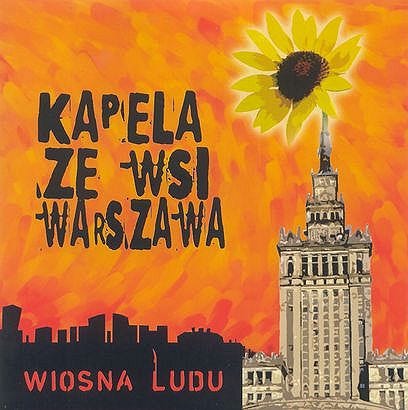EVERY GENRE PROJECT - August 25 - Polish Folk Music
Genre of the Day - Polish Folk Music
Album of the Day - Wiosna Luda (Spring People) by Kapela ze Wsi Warszawa (Warsaw Village Band) (2001)
I’d be remiss not to start an entry on Polish folk music and not mention a fact about Poland that resurfaces in my mind alarmingly often. Poland is known for culinary creations no other place can lay claim to, often borne out of the desperate circumstances that have marked its history. These edible curiosities range from dishes incorporating tripe (cow stomach) to soured milk and my personal favorite, strawberry pasta and strawberry dumplings. Soured milk is a tough sell, but I’m up for a dish as whimsical that appreciates one of the best fruits with easily the best carb. Polish folk music, though, is probably a more viable introduction into the country’s rich culture for most than milk skin.
It also feels serendipitous that the day before starting a new round of classes, my research path for this article would lead me to discover that my school has its very own Polish music center. The world is huge and full of thousands of genres, yet it’s also refreshingly small where it counts. I can’t say I could make it in person today on a weekend to peruse, but trust, I will pay a visit beyond the scope of today. The center’s ‘briefest’ explanation of Polish music history seems the best place to start, then.
The newly Christian nation embraced hymns to the Virgin Mary in the 10th century, and the union of religion and music inspired a wealth of Polish composers; those compositions are ultimately rooted in the country’s many folk dances. We covered triple-time mazurkas earlier in the summer, which emerged as a folk dance that would later become a well-loved dance of European regal festivities and a compositional muse for Poland-born Frédéric Chopin. The polonaise, its cousin, is a slower, grand couple’s dance set to triple time—an even more intricate affair. The oberek is a counterweight, a spinning, twirling extravaganza that truly captures the vivacity held onto by a long-suffering nation. Though quite fond of the triple rhythm, the krakowiak is fast-paced in double time and rounds out its set of national dances with a touch of rhythmic variety. String instruments are king—the violin and the basolia, similar to a cello, act as the melodic lifeblood running through any folk music setting. The cymbały, a large dulcimer, is a rarer yet striking and important player as well.
Today’s album also highlights the singing tradition of white voice, an intense and robust style of choral singing meant to shine like the sun in accompanying important ceremonies. It’s a hypnotic album, rarely stylistically shifting as it hones in on its animated, busy kaleidoscopes of the singing style’s vigor and drama with the best of Polish folk music’s masterings of driving rhythms. The cascading layers of string instruments and stoic drumming of “Czerwone jabłuzsko” (“Red apple”) and the endlessly rich polkas draw the listener in to the deep thicket of history backing these songs, and help one grasp the need for a center to understand all this marvelous music. Here’s to the thinkers who study these musical traditions thoroughly so that our appreciation can bloom as tall as these vast, spring-dappled tunes.




